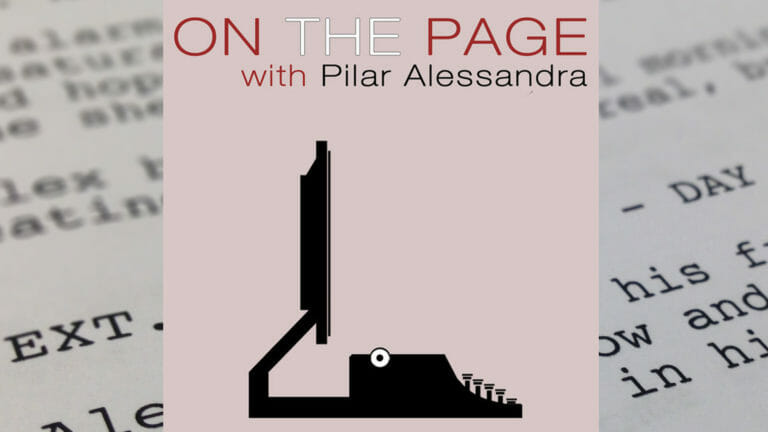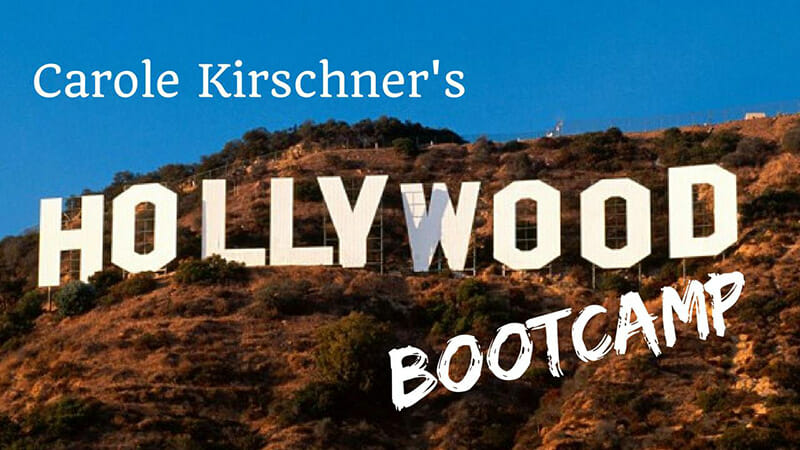By Staff · August 11, 2017

By Steffanie Moyers
On The Page is a weekly podcast hosted by Pilar Alessandra, a writing teacher and former story analyst for Dreamworks SKG. Her podcast focuses on breaking down and understanding the craft of screenwriting and features many prominent voices in the industry. In this article I break down Episode 504 “What Not to Wear,” which features Carole Kirschner: Director of the WGA Showrunner Training Program, CBS Diversity Program and Humanitas Fellowship.
In this episode, Pilar sits down with Kirschner as she discusses her upcoming virtual “Hollywood Bootcamp” course for aspiring television writers. They discuss business advice on how to create your personal PR packet, how to prep for a meeting and what not to wear to an interview along with a few insider tips on breaking in and staying in the industry.
 Personal Story
Personal StoryKirschner discusses the importance of having a personal PR packet, which includes honing in on your personal story, personal logline (also known as your elevator pitch) and a few “golden nuggets” (a term coined by Walking Dead showrunner Glen Mazzara) that set you apart from other people. What’s the one thing these all have in common? You. This is all about what makes you unique.
However, Carole warns not to overshare or get too personal when attempting to be unique and original. It’s important to discern the distinction. “Don’t say something that’s going to make people go ‘awww’. Anything that is going to make somebody feel sorry for you doesn’t have a place in a professional setting until you know somebody. In a general meeting or a pitch meeting you don’t go deep into oversharing.”
Kirschner mentions how important it is to be aware of the type of meeting or interview you’re taking and to tailor what you share accordingly. “Just as you’d change your resume a little for each job you apply for, you change your story about yourself a little for the show you’re meeting for or pitching”.
As an aspiring or established television writer, there are two types of meetings: the pitch meeting and the showrunner meeting. Knowing the difference, what to expect and how to appropriately sell yourself in either is key to landing the job. You could easily walk in blind and just as easily walk out without having mentioned the project. Be prepared and you’ll be successful. Carole notes:
“To be staffed on a television show you’ll first meet with an executive at a studio or network. What they’re looking for is somebody with a really interesting story. They’re definitely going to ask you ‘So tell me about yourself’. You want to go into that meeting with a story. You want to go in with a set idea of the points you want to make. In a general meeting, you’re probably not pitching. You’re just showing that you’re somebody who is fun to be with an enjoyable (to be around). When you go into a showrunner meeting, it’s different. They’re not going to ask you ‘So tell me about yourself,’ they want to know why you love their show.”
When it comes to being in the writer’s room, execs are looking for two things out of their potential investment in you: are other writer’s going to enjoy being in a room with you 10-14hrs a day for months on end, or are you going to drive everyone miserable? Further, are you unique enough that they can see a plethora of originality and stories from you in the writer’s room? Once you’ve passed the exec test, you’ll move onto meeting the showrunner. For this meeting, you’ve already sold yourself as a general writer to the studio or network. Now you need to win over a specific person with a specific project and why they should put their show – their baby – on the line with you on the payroll and in the credits. Remember – as much as you want this, it’s not about you – it’s about their show and what you can bring to it. Carole elaborates:
“The showrunner meeting is so important. You need to have three or four nuggets from your life that directly relate to that pilot that shows that if they bring you into the room you would be a story machine, because of your background. Some showrunners might trap you with ‘what didn’t you like’. Do not fall into that trap. What you can say is, ‘I loved this and I’d like to see more of it’”.
Now that we’ve had a general sense of the personal story we’d need to hone and types of meetings to prepare for, it’s important not to overlook the minor yet crucial final details of nailing an interview: aesthetics. Carole advises,“if you’re a woman you want to wear something interesting; jewelry, a pin, a purse – something memorable. If you’re a man, don’t wear a black suit; the exception is if you want to be an agent, manager or executive.”
It’s important to remember there’s always a fine line between over-dressing and under-dressing in Hollywood. For a PA job, polished denim jeans with a button down is the perfect outfit. A T-shirt is far too casual and a suit is too dressy. For a writer’s job, a sports coat for men looks sharp and is more appropriate than a suit jacket.
Remember, you’ll be meeting with execs and don’t want to look like you’re dressing for their job. It’s also crucial to keep in mind what can be held against you. Tattoos, facial piercings, and unnatural color or overgrown hair / facial hair are all things that could keep you from landing that job. Additionally, Carole notes:
“Here’s two suggestions for writers: don’t wear cologne (or perfume), because somebody always has an allergy. You have about 60 seconds to make the right impression. You want to remove anything that can be a “no,” anything that can be a roadblock”.
Pilar concurs that “everything matters. This is the moment. You’ve put in all the hard work with your actual writing. You’ve worked really hard to get representation. This is important. Don’t blow it on little things”.
With any interview, especially in Hollywood, competition is fierce. It’s important not to seem overeager while also not blending into the crowd too much. What are some ways you can stay memorable without over or under doing it? Carole suggests in a pitch meeting to “sit on the arm of the chair – if you’re losing them get up and walk around a little to bring excitement back to the pitch. Keep them listening by re-engaging”.
On following up, Carole suggests staying vigilant and not delaying too long. “Most people feel they’re going to be annoying by following up. But following up consistently is how you’re going to make connections and get into meetings”.
Her Hollywood Bootcamp course also notes the importance of the often dreaded networking and how to better approach it by getting out there in new ways and setting small goals for yourself. “If you focus on the other person and what you can do for them – think to yourself how can I help them?”
One event I personally frequent are WGA panels. You do not need to be a member to attend any. They are hosted often and easily accessible by their site. Their events are often in various WGA locations and always with a different theme and panel of writers – sometimes show specific with private screenings. I have attended WGA panels with the 2017 Oscar nominees for “Best Screenplay”, staff writers on an ABC sitcom, and a varied panel of Writing Fellowship winners. These events are always highly beneficial when it comes to not only networking, but learning about the various paths writers paved before you.
Interested in learning more? Head to Carole Kirschner’s site: www.carolekirschner.com for more information on her background and career counseling packages. For her Hollywood Bootcamp course, text “HollywoodDownload” to 44222 for a discount from Pilar’s podcast.
For more episodes from ‘On The Page’ with Pilar Alessandra, click here! And to keep up with all the latest from The Script Lab, be sure to follow us on Twitter, Facebook, and Instagram.